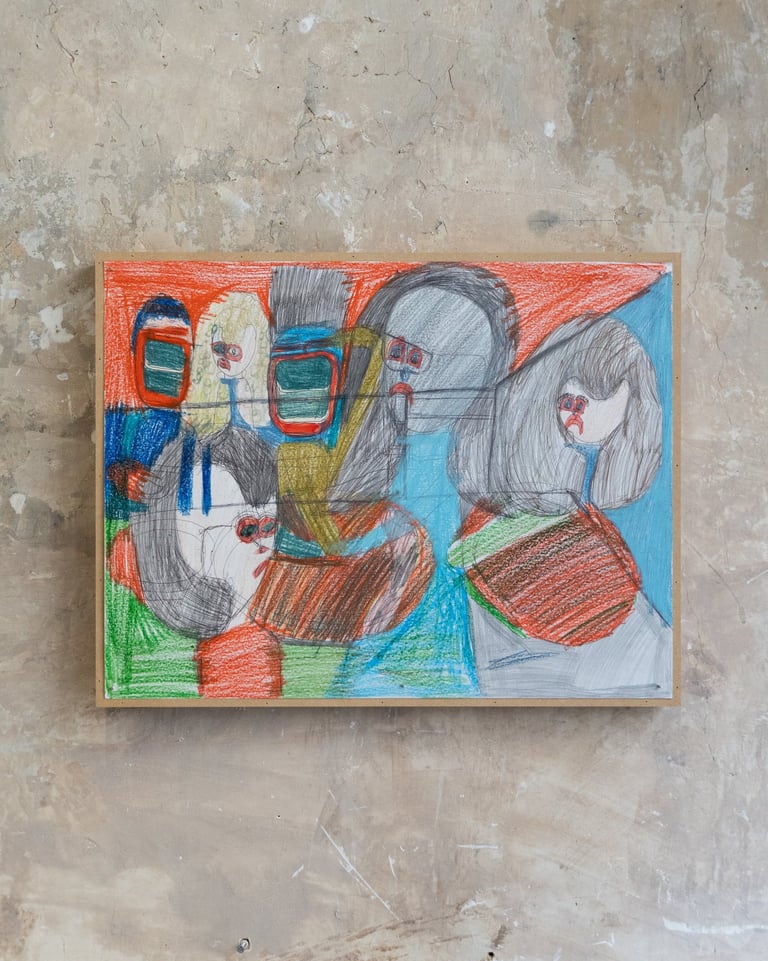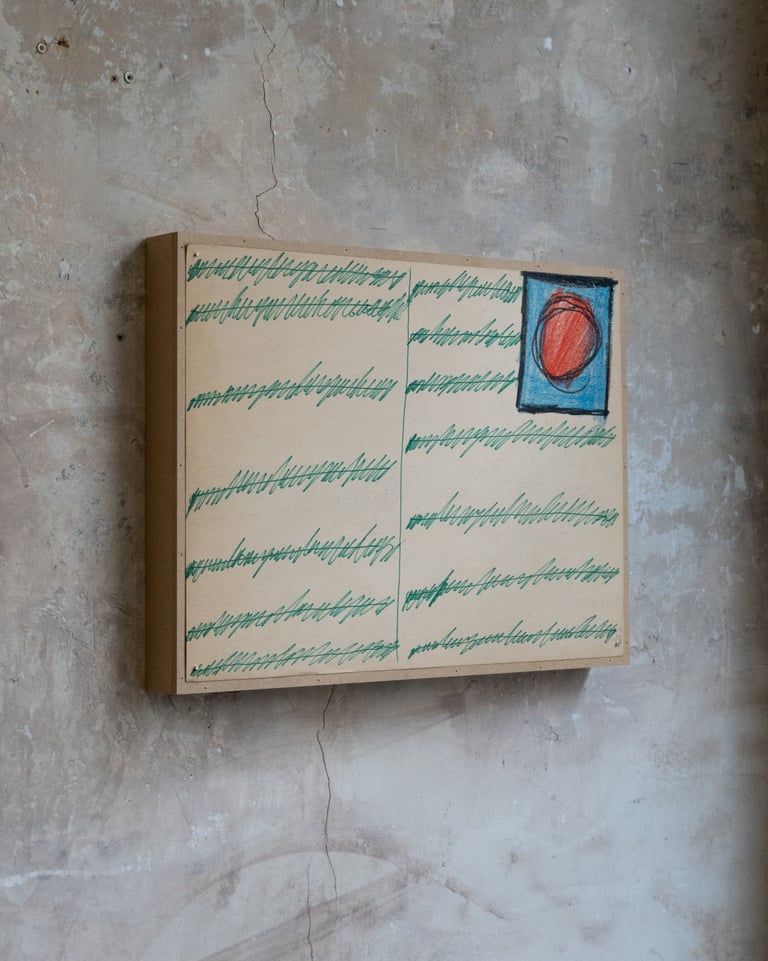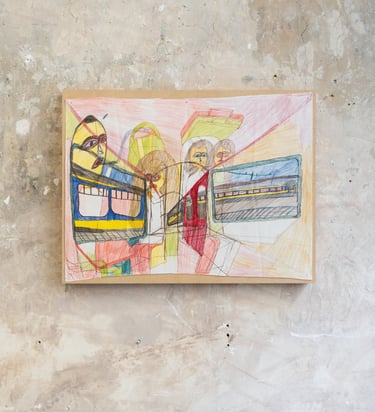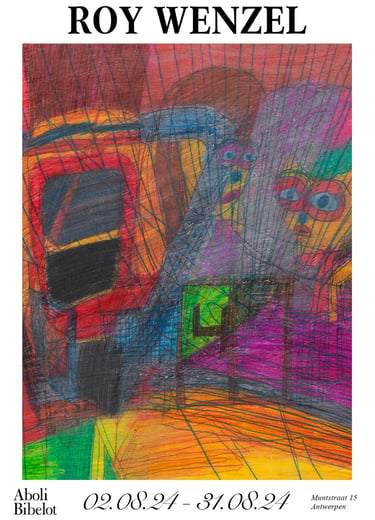Roy Wenzel’s gaze penetrates the surface of ordinary perception, and his narrative drawings
reveal a rich pool of experience, emotion, and desire in a manner whose sophistication is masked by the directness of its execution and whose plenitude demands the rapt attention on anyone who views them. His subject is everyday life – travel by taxi or train, urban environments, and personal experience – but described in a way that renders the familiar strange and unsettling. His technique is bold and sure. In each work he first establishes a linear superstructure describing forms without any care for overlayering, so that people, buildings and transport exist in transparent interdependence. Colour is then added, most commonly with crayons, oil pastel or marker pen, and a process of obliteration and retrieval takes place.
Roy Wenzel
02.08.2024 - 31.08.2024




Roy Wenzel, Untitled, mixed media on cardboard, 56 x 42 cm, circa 1990, double-sided
Wenzel’s parents came to The Netherlands as refugees from Indonesia in the early 1950s. He suffered from severe eczema from his earliest years and was hospitalised constantly as a child because of problems associated with the condition. It was during this period that it also became apparent that he was autistic. It is still not known whether his condition is innate or was induced by terrible infant trauma. What is certain is that the memory of these times has remained very strong, as revealed in repeated images of hospital wards, nurses and in particular the constant recurrence of a self-portrait figure with arms raised behind its head, hair standing on end, and face screwed into a deafeningly silent scream that rivals Edvard Munch’s iconic image. The rigid arms are a symbol of disempowerment, related to the regular act of securing Wenzel’s hands to prevent him scratching at his inflamed skin as a child.
He first began drawing at the age of eleven when he gained access to materials in hospital. From that time until a few years ago, he made art spontaneously almost every day, both at home with his brother Pim and sister-in-law Annemarie, who have cared for him for many years, and at the day centre he attended. Trains and taxis are constantly recurring motifs in his work, and the railway carriage window is perhaps the single most important element. It literally frames many of his pictures (hence the characteristically rounded corners), so that viewer looks at each scene as if through a train window. This is no idle pictorial device, however. The so-called ‘window-train’ – a handmade wooden frame on a pole that resembled a train window – was a key element in the creative process for Wenzel. He gazed through it before turning to his paper to make a drawing, not to depict the scene occupying the actual space behind the frame, but presumably after having relived in vivid imagination some event he had experienced. We can guess at this from the fragments of information Wenzel sometimes volunteered – usually the names of people and places – but his condition ensured that the visual image was his only effective means of making contact at a sophisticated level with viewers.
A Dutch suburban train window also forms the characteristic screaming mouth of the figure that recurs in so many works. As a person who found it so difficult to communicate verbally his thoughts and desires, this pictorial innovation represents a truly remarkable transformation of the organ of verbal communication into a metaphor for sight – the window. His pictures come, as it were, from his mouth; they are visual speech.
- Colin Rhodes
Distinguished Professor of Art, Hunan Normal University China
Author of Outsider Art: Art Brut and Its Affinities (2022)


Roy Wenzel, Untitled, mixed media on paper, 78 x 59 cm, circa 1990
Roy Wenzel, Untitled, mixed media on paper, 65 x 50 cm, circa 1990


